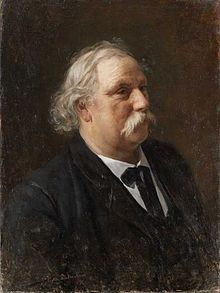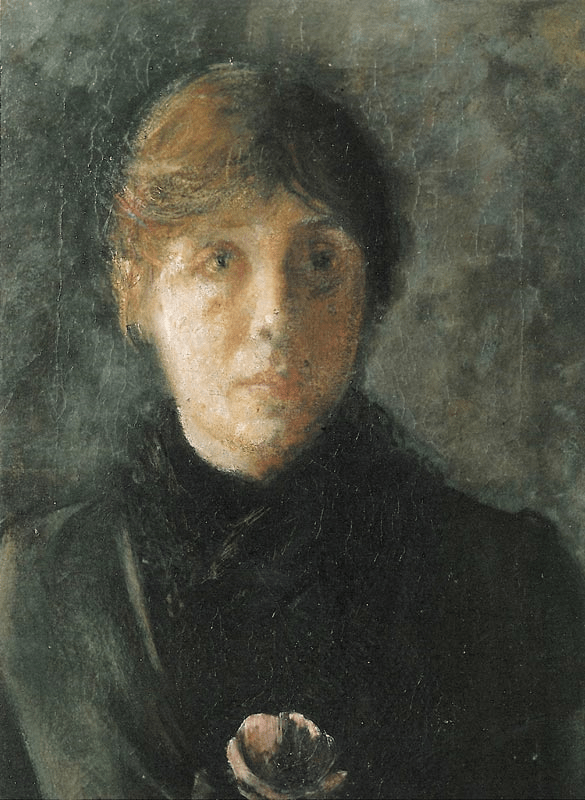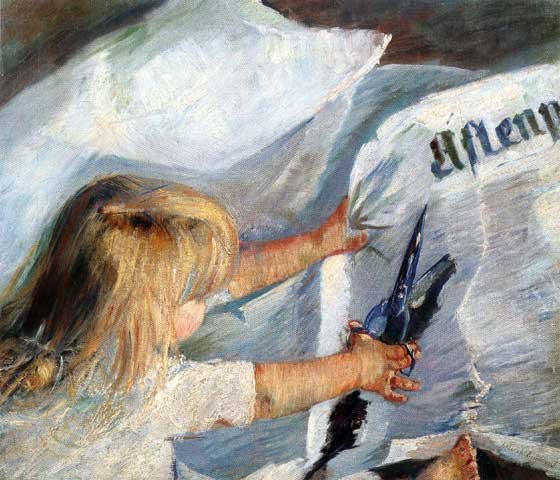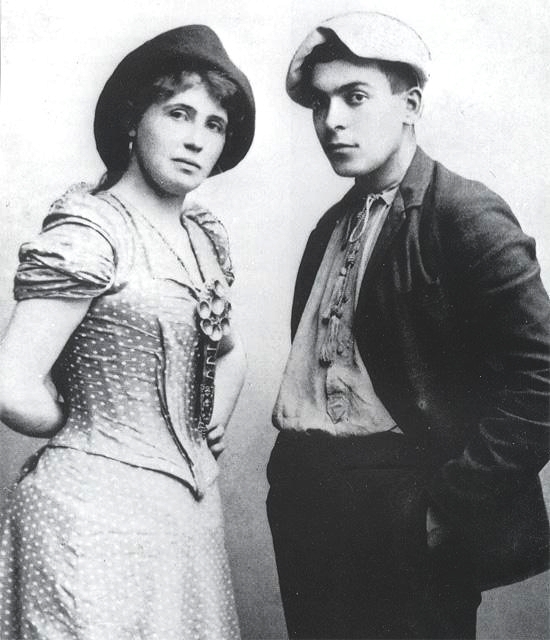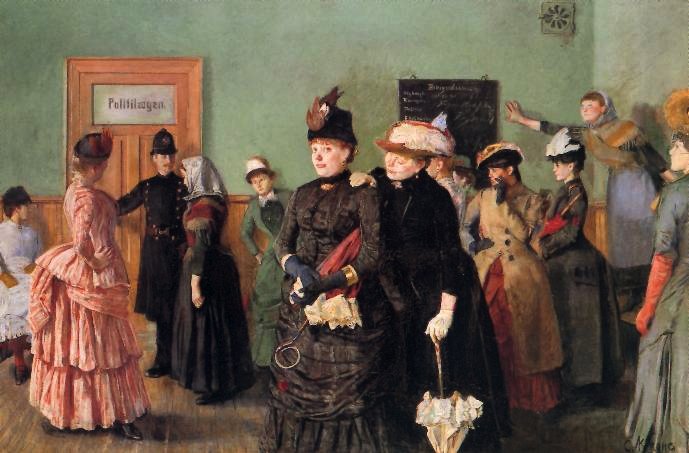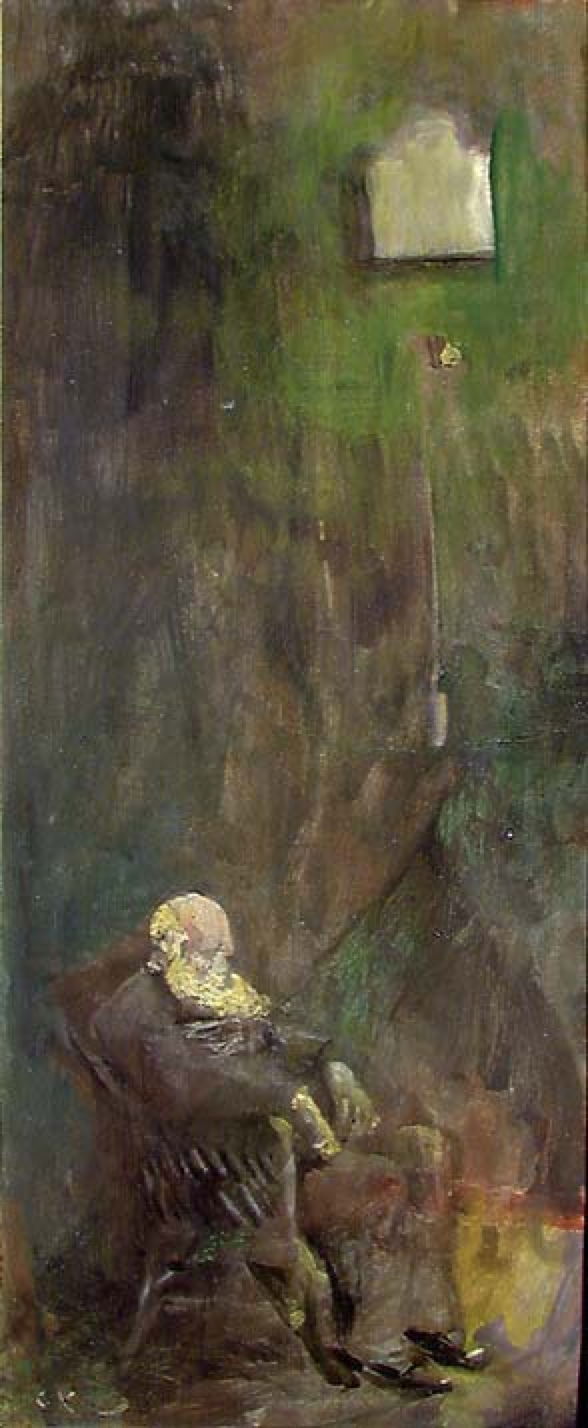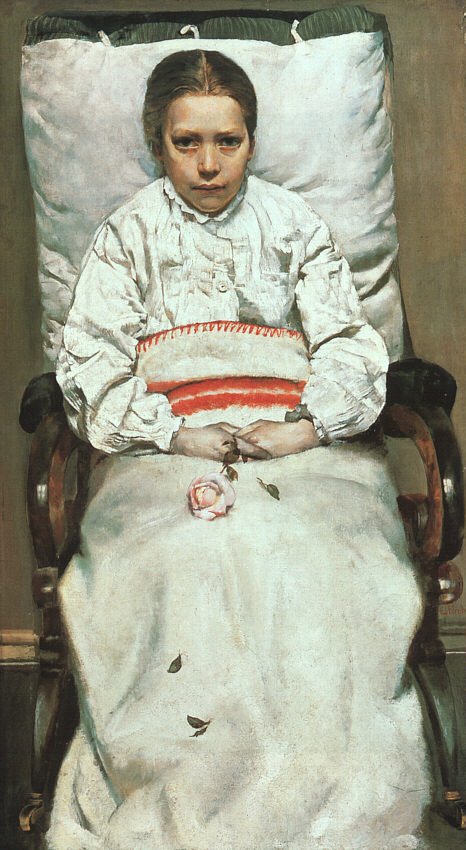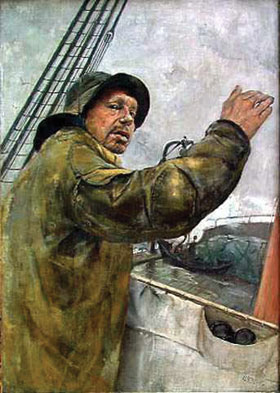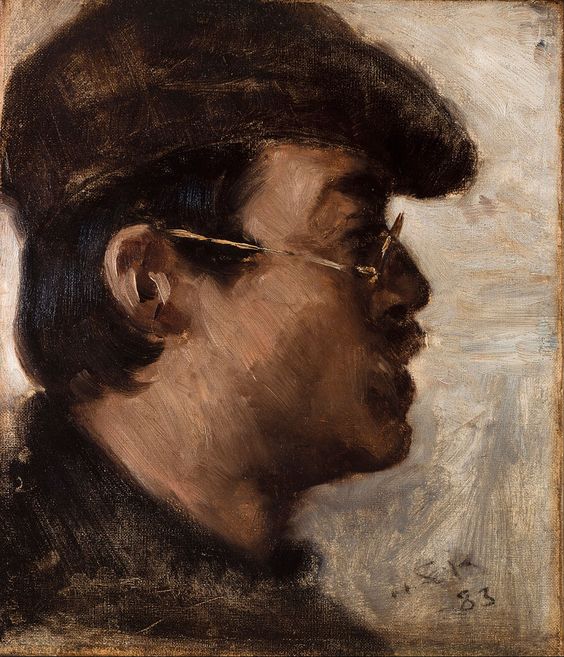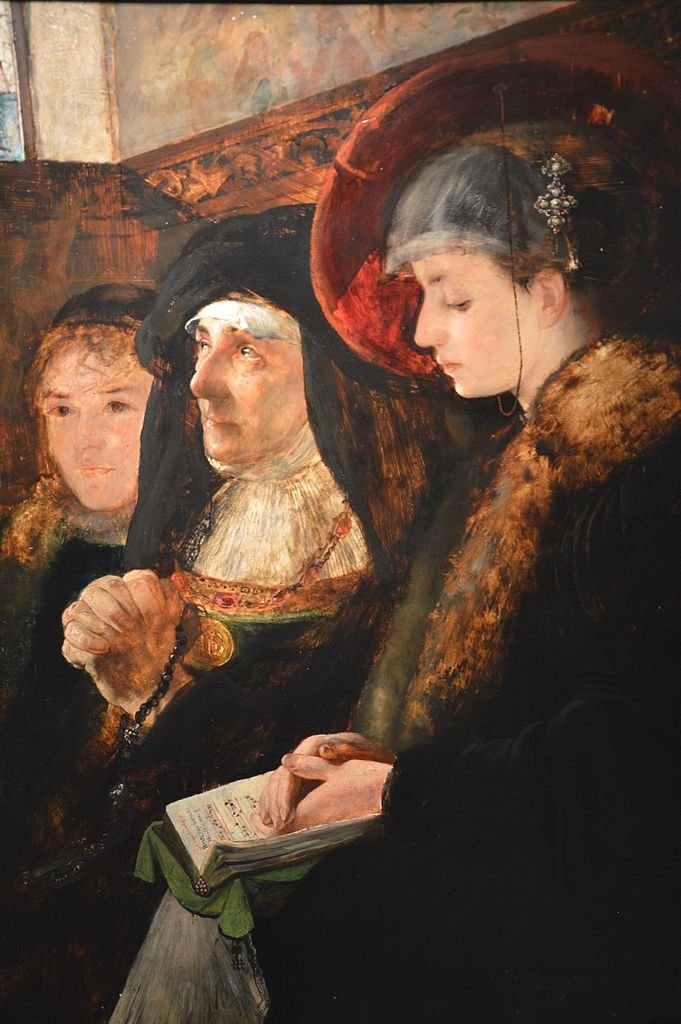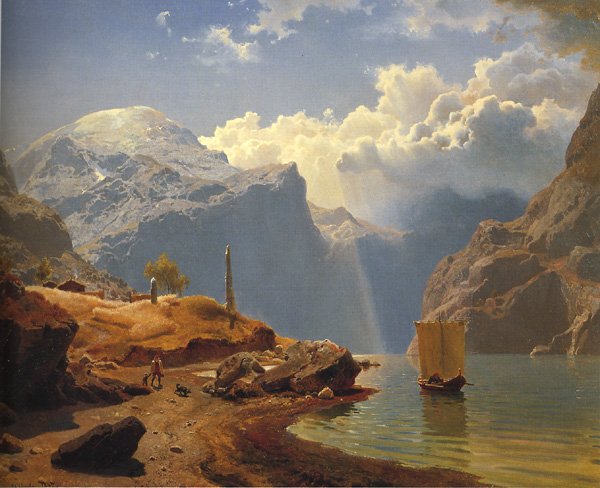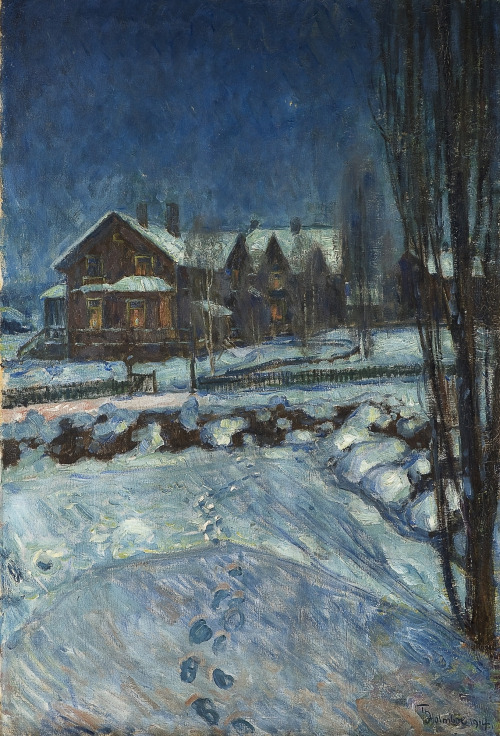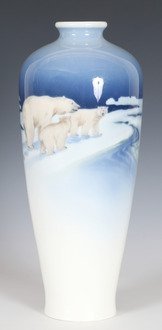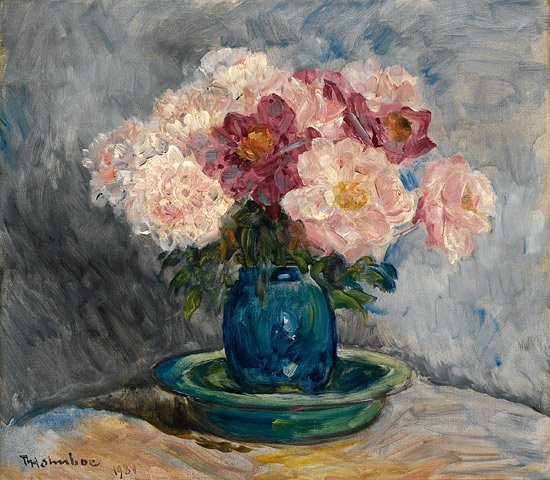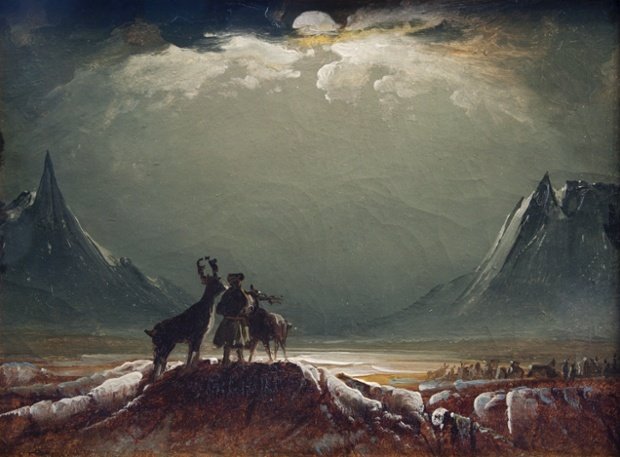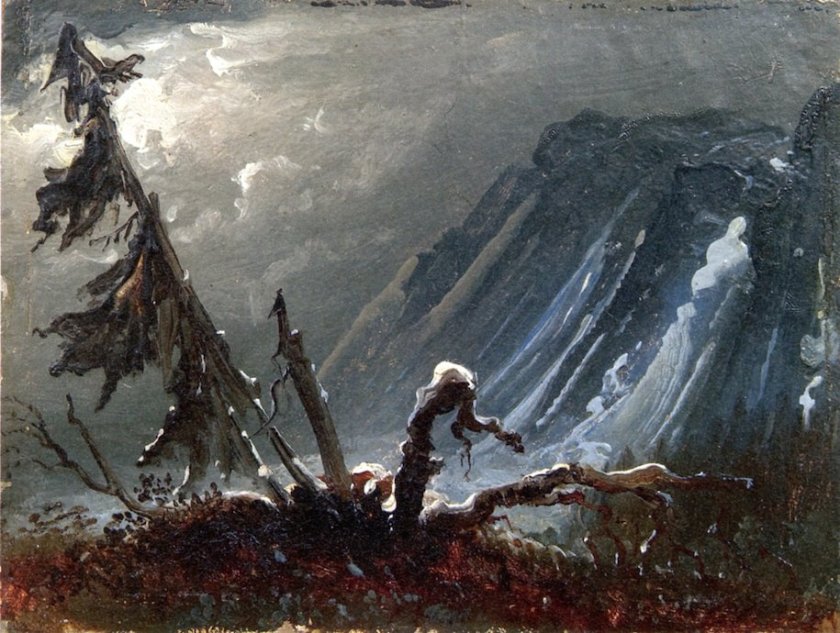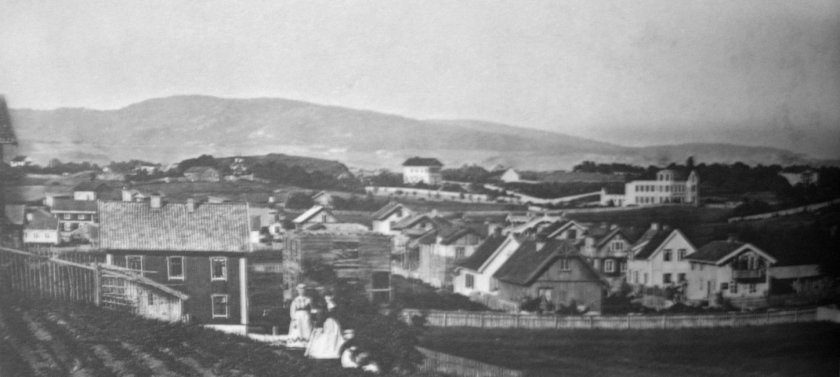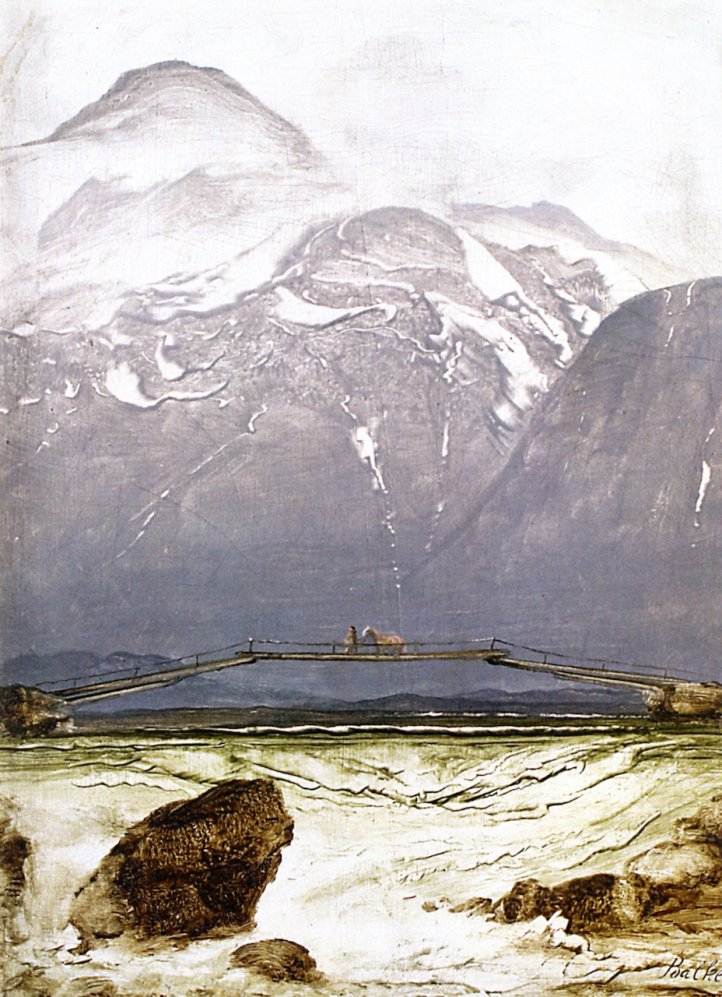If you are a lover of landscape paintings. If you have ever been seduced by the dramatic beauty nature offers up. If you have ever dreamt about cruising along a Norwegian fjord then this blog is especially for you. Our guide to the mesmerising beauty of nature is the nineteenth-century Norwegian landscape painter Eilert Adelsteen Normann.
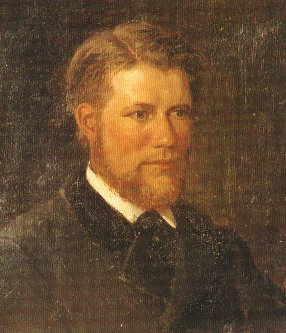
Eilert Adelsteen Normann was born on May 1st 1848 in the northern Norwegian coastal town of Bodin which lies on a peninsular between the great fjords of Vestfjorden and Saltfjorden. It is at the heart of a rough mountainous area full of beauty but only readily reachable by sea. Eilert Adelsteen was the second of six children, having four brothers and a sister. His father was Johan Normann, a merchant and hunting skipper as well as being a part-time farmer. His mother was Catharina Weitgan, the daughter of a shoe and umbrella maker.

When Adelsteen was twelve years old he was sent to school in the city of Trondheim which was over four hundred miles from his home. He later transferred to the Tanks Videregående Skole, a senior secondary school which had just opened in new premises in Bergen five years earlier. In 1869, when Adelsteen was twenty-one-years-old, tragedy struck the family when his eldest brother was killed at sea in a shipping accident in the Bay of Biscay. Adelsteen was now the oldest of his siblings and it fell on his shoulders to take up the mantle of heir to his father’s trading business which was based on the island of Vågøya. It was for this reason that he went to Copenhagen to study business practices which would stand him good stead when the time came to run the family business.

I have not been able to find out what happened in Copenhagen but all I know is that in that same year he arrived there to study business, 1869, he left and travelled to Düsseldorf and enrolled on a three-year course at the Kunstakademie Düsseldorf where he studied under Andreas Müller and later Albert Flamm and Eugen Dücker, the Baltic German romanticist painter, famed for his landscape and marine works.
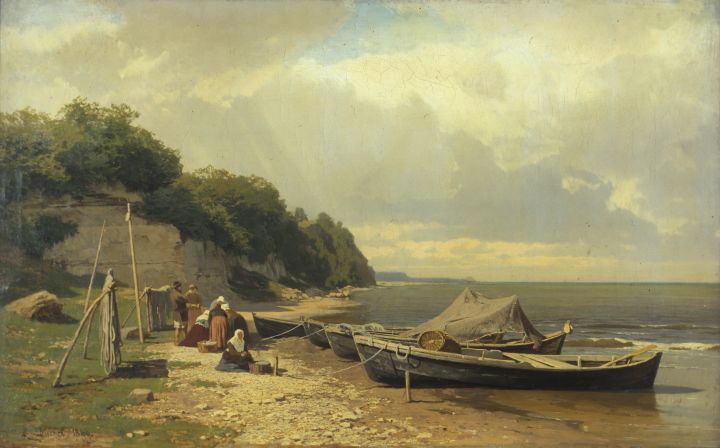
Dücker headed up the landscape class at the Academy. Adelsteen Normann became part of the Düsseldorf School of Painting. The paintings of this School were typified by delicate and detailed landscapes, that were sometimes imaginary and often focused on a religious or allegorical story with a landscape setting.

In 1872, despite only having studied art for three years at the Düsseldorf Academy Normann exhibited some of his landscape paintings, featuring Norwegian fjords, at an exhibition in Düsseldorf and some were purchased by the Düsseldorf Art Association. More were bought up by the art associations of Lubeck and Leipzig. In June 1872 he exhibited and sold more of his work at the Nordic Industrial and Art Exhibition in Copenhagen which was held between June and November. The Danish-Prussian War of 1864 was over, and the conservative Hojre political party had control of the Danish parliament and they wanted to join the world’s fair movement to show off the country’s progress in agricultural (which had suffered during recent years) industrial, and the arts. Visitors attending the Exhibition during the nearly five-month run was over six hundred thousand and once again many of Normann’s paintings of the Norwegian fjords were sold.

From 1869 until Adelsteen Normann lived in Germany but he and his family would return most summers to Western Norway, the northernmost parts of Nordland and the rugged area around Lyngen, a municipality in Troms county, where he would find more and more spectacular landscapes to paint. He would sketch and photograph the scenery and return to his studio in Dusseldorf and Berlin to complete the paintings.

Adelsteen Normann left Dusseldorf in 1883 and went to live in Berlin. He continued to return each summer to Norway and in 1890, he bought a plot of land in Sjøtun, an area nestling on the edge of Kattfjord, and set amongst the spectacular mountains on the island of Kvaløya. This idyllic location was only 40 minutes from Tromsø and had a spectacular view overlooking the Sognefjord. The following year he then purchased his house which arrived in pre-fabricated kit form from a company in Trondheim who had their men erect the structure. It was a “dragon style” house with lots of wood carvings and dragon figures. Normann’s dragon-style villa was the first to be built by an artist in this particular style, and it became the prototype for the ones that came later. These houses in Balestrand became a special talking point of the town and were to become very important for the town’s tourism and so have always been well preserved. Normann’s summer house at Balestrand remained with his heirs until 1934.

During his time at the Kunstakademie Düsseldorf Normann became friendly with fellow student Hans Dahl, a fellow Norwegian. Dahl’s Norwegian landscapes depicting the mountains and fjords were similar to Normann’s works but Dahl nearly always included figures in his landscapes.

It was Adelsteen Normann who advised Dahl to build a villa in Balestrand and three years after Normann’s own residence was completed, Dahl had his own erected. It was called Villa Strandheim.

Hans Dahl and Adelsteen Normann were close friends of Emperor Wilhelm II of Germany. Like Normann, Dahl returned to Balestrand from Germany each summer and Dahl organised large garden parties at Villa Strandheim. It was here that the Emperor was a regular guest. In 1910 the Dahl’s son Hans Andreas Dahl built a studio near his father’s villa.

Whilst living in Germany, Normann married Catharina Hubertine Weitgan who came from the Rheinland. The couple had 4 children: Emma, Otto, Olga and Walter. When Catharina died in 1911, sixty-three-year-old Normann re-married that same year. His second wife was Luise Rostalski, who was thirty-five-years younger than her husband. Together they had a son called Adelsteen.

Normann exhibited his works in a number of venues in Europe including the important Salon de Paris from as early as 1882. His works earned a ‘Mention Honorable’ in the 1884 Salon and he was awarded a bronze medal in 1889. In Berlin Normann became well-known both as an artist and as a board member of the Verein Berliner Künstler and he established a school for painters.

During his annual visit back to Norway in 1891, Normann took the opportunity to exhibit some of his fjord landscapes in Oslo, at the Kristiania Art Society, at the same time that the young Edvard Munch was exhibiting some of his paintings in the city. including his work, Evening. Melancholy. Normann was so impressed that in 1892, on behalf of the Verein Berliner Künstler (Society of Berlin Artists), he invited Edvard Munch to present his work at the Society’s November exhibition. Twenty-eight-year-old Munch felt flattered by Normann’s invite and agreed to come. He felt honoured to put his work before famous and established artists and hopefully his work would be seen by more sophisticated and knowledgeable public in Berlin.

Munch arrived in Berlin with more than fifty-five works. It was the Society’s first one-man exhibition. Munch and Normann collaborated in preparing the exhibition, which was held at the newly built Architektenhaus. Was the exhibition a success? No, in fact it was a disaster. It appears the Society was not ready for Munch’s Symbolist artistic style which some of the members hated. The society members either loved them or hated them. The majority of members described Munch’s images as being repugnant, ugly and mean, and they caused an outrage. The Verein (The Association of Berlin Artists) held an extraordinary meeting on November 11th, and in a vote of 120 to 105, it was decided to close the exhibition after just one week, leaving Munch perplexed as to why he had been invited in the first place. The row over the merit of Munch’s one-man exhibition and the scandal following the early closing of it caused a number of the younger Society members, who were not prepared to put up with such an insult to an invited guest, broke away from the traditionalist stance of the Verein and joined together to form what they termed a “free association for the organization of artistic exhibitions”. They organized an art exhibition in the spring of 1892 as Die Elf. They did not however leave the main Society, so as to ensure the opportunity to display their work at its future exhibitions.
The dispute regarding Munch and his artwork shattered the art society! So how did Munch look upon the disaster? In Arne Eggum’s 1984 book, Edvard Munch: Paintings, Sketches, and Studies, Munch was amused and was quoted as saying:
“…Never have I had such an amusing time—it’s incredible that something as innocent as painting should have created such a stir…”

The exhibition went on to later showings in Düsseldorf and Cologne before returning to Berlin. During Munch’s four years in Berlin while fraternising with like-minded artists and writers, such as his close friend August Strindberg, at a bar called the Black Piglet, Munch created some of his major and best-known works, including The Scream, The Vampire and Madonna. The exhibition and the humiliating effect it had on the Verein Berliner Künstler was well documented at the time, but for Munch, it resulted in the start of his international fame.

Adelsteen Normann was one of the favourite painters of Kaiser Wilhelm II, who loved his landscape works featuring the Norwegian fjords. Most of Normann’s paintings depicted Norwegian fjord landscapes as well as modern life in Norwegian fjord villages with steam-driven cargo ships and large tourist ships. Normann, through his landscape works, is credited with making Norwegian fjords a popular tourist destination, especially with the upper classes, who would also buy his paintings as a memento of their travels. In the early 1890s, whilst living in Berlin he was also doing good business selling his paintings to hotel owners

Adelsteen Normann was a regular exhibitor. He received recognition for his work and was awarded many medals and awards, for his paintings including the Prince of Wales Medal 1874, Médaille d’honneur at the Salon in 1884 and a gold medal in Lyon in 1889. In 1897, he was appointed Knight of the 1st Class of the St. Olav Order. He has many paintings in museums around the world as well as in private collections.

In his later life, Normann was afflicted with asthma and in 1917, on medical advice, he returned to Norway. Despite his illness he carried on painting. Unfortunately for Normann who was already suffering breathing problems due to his asthma he was ill equipped physically to withstand the Spanish flu epidemic which swept across Norway in 1918. In Norway the epidemic killed between 13,000-15,000 people, most of them during the autumn of 1918 and mostly from pneumonia or pulmonary complications.

Adelsteen Norman died in Kristiania (Oslo) on December 26th 1918 aged 70. The urn containing his ashes was returned to the Stahnsdorfer Waldfriedhof, in Berlin.


















